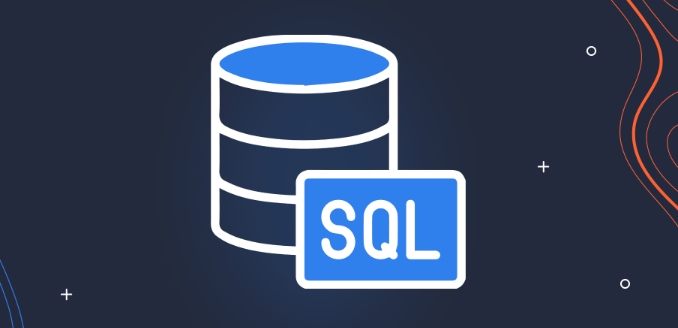如何創建新用戶並在SQL中分配角色?
創建用戶並分配角色的方法因數據庫管理系統而異;2. 在MySQL中,使用CREATE USER創建用戶,並用GRANT分配權限或角色,MySQL 8.0 支持角色功能;3. 在PostgreSQL中,CREATE USER或CREATE ROLE均可創建可登錄用戶,並通過GRANT授予權限或角色;4. 在SQL Server中,先用CREATE LOGIN創建服務器級登錄,再用CREATE USER創建數據庫級用戶,最後通過sp_addrolemember分配角色;5. 不同系統需注意主機限制、角色與權限區別、密碼安全及權限測試,確保用戶能正確連接並執行授權操作。

Creating a new user and assigning roles in SQL depends on the database management system (DBMS) you're using—such as MySQL, PostgreSQL, or SQL Server—since syntax and features vary. Below are common examples for the most widely used systems.

1. MySQL: Create User and Assign Roles (Privileges)
In MySQL, roles were introduced in version 8.0. Earlier versions use direct privilege assignment.
Create a New User
CREATE USER 'username'@'host' IDENTIFIED BY 'password';
Example:

CREATE USER 'john'@'localhost' IDENTIFIED BY 'securePass123';
Grant Roles or Privileges
MySQL uses GRANT to assign privileges (like roles in older versions):
GRANT SELECT, INSERT ON database_name.* TO 'john'@'localhost';
Or assign a predefined role (if using MySQL 8.0 ):

CREATE ROLE 'app_reader'; GRANT SELECT ON app_db.* TO 'app_reader'; -- Assign role to user GRANT 'app_reader' TO 'john'@'localhost';
Activate Role (for the user session)
SET DEFAULT ROLE 'app_reader' TO 'john'@'localhost';
2. PostgreSQL: Create User and Assign Roles
In PostgreSQL, users and roles are essentially the same— CREATE USER is a shorthand for CREATE ROLE with login privileges.
Create a User with Login Privileges
CREATE USER john WITH PASSWORD 'securePass123';
or
CREATE ROLE john WITH LOGIN PASSWORD 'securePass123';
Grant Privileges or Roles
You can grant privileges on databases, schemas, or tables:
GRANT SELECT, INSERT ON TABLE orders TO john;
Create a role and assign it to a user:
CREATE ROLE data_analyst; GRANT SELECT ON ALL TABLES IN SCHEMA public TO data_analyst; -- Assign role to user GRANT data_analyst TO john;
3. SQL Server: Create Login and User, Then Assign Role
In SQL Server, you first create a login (server level), then a user (database level), and finally assign a role.
Create a Login (Server Level)
CREATE LOGIN john WITH PASSWORD = 'securePass123';
Create a User in a Specific Database
USE YourDatabase; GO CREATE USER john FOR LOGIN john;
Assign a Database Role
-- Add user to a built-in role EXEC sp_addrolemember 'db_datareader', 'john'; -- Or assign to a custom role EXEC sp_addrolemember 'custom_analyst', 'john';
Key Notes Across Systems
- Host Specification : In MySQL,
'john'@'localhost'means the user can only connect from localhost. Use'john'@'%'for remote access (be cautious with security). - Roles vs. Privileges : Newer systems support role-based access control (RBAC), allowing easier management.
- Always Use Strong Passwords : Avoid plaintext or weak passwords.
- Test Access : After setup, test the user's access using their credentials.
Summary Steps (General Flow)
- Step 1: Create the user (or login) with a password.
- Step 2: Grant necessary privileges or assign to a role.
- Step 3: Apply roles or set defaults so permissions take effect.
- Step 4: Test the user's access and permissions.
The exact commands depend on your DBMS, but the logic remains similar.
Basically, define who can connect, then define what they can do.
以上是如何創建新用戶並在SQL中分配角色?的詳細內容。更多資訊請關注PHP中文網其他相關文章!

熱AI工具

Undress AI Tool
免費脫衣圖片

Undresser.AI Undress
人工智慧驅動的應用程序,用於創建逼真的裸體照片

AI Clothes Remover
用於從照片中去除衣服的線上人工智慧工具。

Clothoff.io
AI脫衣器

Video Face Swap
使用我們完全免費的人工智慧換臉工具,輕鬆在任何影片中換臉!

熱門文章

熱工具

記事本++7.3.1
好用且免費的程式碼編輯器

SublimeText3漢化版
中文版,非常好用

禪工作室 13.0.1
強大的PHP整合開發環境

Dreamweaver CS6
視覺化網頁開發工具

SublimeText3 Mac版
神級程式碼編輯軟體(SublimeText3)
 SQL用於預測分析
Jul 20, 2025 am 02:02 AM
SQL用於預測分析
Jul 20, 2025 am 02:02 AM
預測分析中SQL能完成數據準備和特徵提取等工作,關鍵在於明確需求並合理使用SQL功能。具體步驟包括:1.數據準備需從多表提取歷史數據並聚合清洗,如按日匯總銷量並關聯促銷信息;2.特徵工程可用窗口函數計算時間間隔或滯後特徵,如通過LAG()獲取用戶最近購買間隔;3.數據切分建議基於時間劃分訓練集與測試集,如用ROW_NUMBER()按日期排序後按比例標記集合類型。這些方法能高效構建預測模型所需的數據基礎。
 SQL開發人員的關係數據庫設計原理
Jul 21, 2025 am 01:56 AM
SQL開發人員的關係數據庫設計原理
Jul 21, 2025 am 01:56 AM
設計關係型數據庫時,應遵循四個關鍵原則。首先,正確使用主鍵和外鍵約束,確保數據完整性和關聯準確性;其次,合理進行規範化設計,通常達到第三範式(3NF),消除冗餘並保證數據一致性;第三,為常用查詢建立合適的索引,提升查詢性能但避免過度索引;最後,使用一致的命名規範和結構風格,增強可讀性和可維護性。掌握這些原則有助於構建清晰、高效、健壯的數據庫結構。
 邊緣計算和SQL:邊緣的數據處理
Jul 21, 2025 am 01:15 AM
邊緣計算和SQL:邊緣的數據處理
Jul 21, 2025 am 01:15 AM
在邊緣計算場景下使用SQL處理數據變得重要,因為它能減少傳輸壓力並加快響應速度。核心原因包括數據分散、延遲敏感和資源有限。挑戰包括資源受限、數據格式多樣、實時性要求高和部署維護複雜。部署流程包括選擇適合邊緣的SQL引擎、數據源接入、寫SQL腳本處理、輸出結果。有用技巧包括使用窗口函數、過濾與採樣、簡化嵌套查詢、使用內存表、連接外部數據源。
 SQL無服務器計算選項
Jul 27, 2025 am 03:07 AM
SQL無服務器計算選項
Jul 27, 2025 am 03:07 AM
SQLServer本身不支持無服務器架構,但云平台提供了類似方案。 1.Azure的ServerlessSQL池可直接查詢DataLake文件,按資源消耗計費;2.AzureFunctions結合CosmosDB或BlobStorage可實現輕量SQL處理;3.AWSAthena支持S3數據的標準SQL查詢,按掃描數據量計費;4.GoogleBigQuery通過FederatedQuery接近Serverless理念;5.若必須使用SQLServer功能,可選AzureSQLDatabase的無服
 SQL Server中的隔離級別:讀取訂單,快照,可序列化
Jul 21, 2025 am 12:35 AM
SQL Server中的隔離級別:讀取訂單,快照,可序列化
Jul 21, 2025 am 12:35 AM
ThethreemainSQLServerisolationlevels—ReadCommitted,Snapshot,andSerializable—differinconcurrencyandconsistency.1.ReadCommittedpreventsdirtyreadsbutallowsnon-repeatableandphantomreads,offersbalancedperformance,andcanuseRCSItoreduceblocking.2.Snapshotus
 如何在SQL中重命名桌子?
Jul 21, 2025 am 02:19 AM
如何在SQL中重命名桌子?
Jul 21, 2025 am 02:19 AM
改表名在SQL中通常使用RENAMETABLE或ALTERTABLE命令實現。 1.MySQL、MariaDB等數據庫使用RENAMETABLEold_table_nameTOnew_table_name;語法,支持批量操作;2.SQLServer需用sp_rename存儲過程,語法為EXECsp_rename'old_table_name','new_table_name';3.PostgreSQL則採用ALTERTABLEold_table_nameRENAMETOnew_table_name
 掌握商業智能分析的SQL
Jul 26, 2025 am 07:53 AM
掌握商業智能分析的SQL
Jul 26, 2025 am 07:53 AM
tomastersqlforbianalytics,startByudeSandingBidAtatrasturesLikeFactandDimensionTables,thenusestrategicicaggregationswithgroupbybyandhaving,loveragedateFounctionsFormionsFortionsFortionsFortionsFortimeNalysis,and wertriteClean,andWealableAbleableSublequeries.firstable Quirst,graspDimensimentionalModeLingtojoJoii
 您如何計算SQL中兩個日期之間的差異?
Aug 02, 2025 pm 01:29 PM
您如何計算SQL中兩個日期之間的差異?
Aug 02, 2025 pm 01:29 PM
要計算兩個日期之間的差值,需根據數據庫類型選擇相應函數:1.在MySQL中使用DATEDIFF()計算天數差,或TIMESTAMPDIFF()指定單位如HOUR、MINUTE;2.在SQLServer中使用DATEDIFF(date_part,start_date,end_date)並指定單位;3.在PostgreSQL中通過直接相減得到天數差,或使用EXTRACT(DAYFROMAGE(...))獲取更精確間隔;4.在SQLite中利用julianday()函數相減得出天數差;始終注意日期順序







